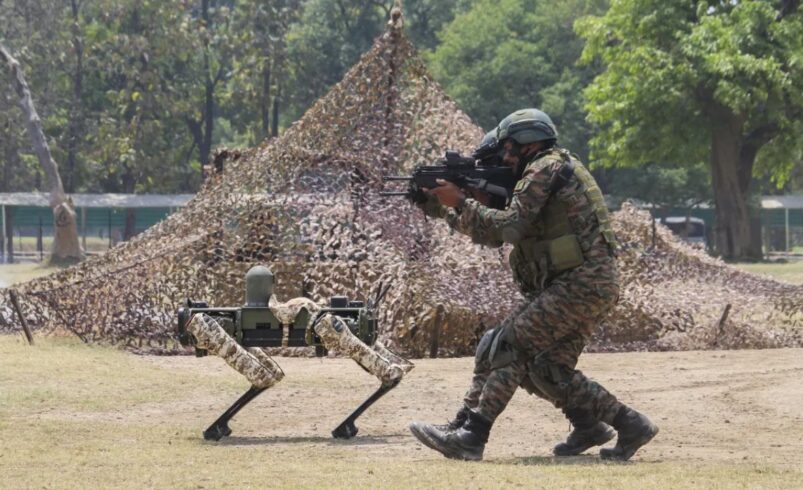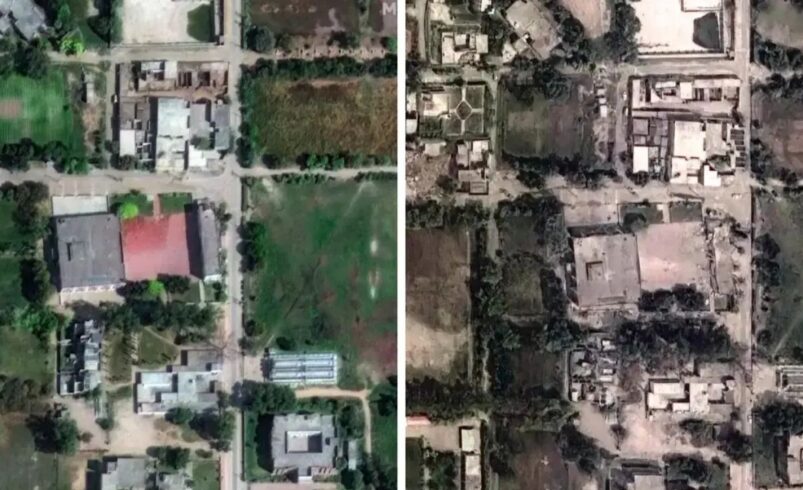On the night of May 7–8, Pakistan launched a coordinated military strike targeting 15 Indian cities and military establishments across Northern and Western India. The attack, involving drones and missiles, was intercepted and neutralised entirely by India’s advanced air defence network, most notably the Russian-origin S-400 system and the Integrated Counter UAS Grid. This act of aggression was in direct response to Operation Sindoor, India’s earlier strike on terror camps in Pakistan and PoK. Despite repeated Indian warnings against escalation, Islamabad chose to target vital defence locations from Srinagar to Bhuj—an act India swiftly and effectively responded to.
List of Targeted Cities and Strategic Intent Behind the Strike
The Pakistani military offensive attempted to hit critical installations in 15 locations: Awantipura, Srinagar, Jammu, Pathankot, Amritsar, Kapurthala, Jalandhar, Ludhiana, Adampur, Bhatinda, Chandigarh, Nal, Phalodi, Uttarlai, and Bhuj. These areas include key Indian Air Force bases, command centres, and other defence infrastructure. According to defence experts, the selection of these cities indicates an attempt to weaken India’s military preparedness and provoke a larger conflict. However, the Indian Armed Forces acted decisively and ensured none of these targets were damaged, thanks to real-time threat monitoring and quick interception protocols.
India’s Retaliation: Focused and Proportionate
India’s counter-response was swift and strategically mirrored Pakistan’s aggression. Indian forces took down Pakistani Air Defence Radars and missile systems in multiple locations, including Lahore, effectively degrading Pakistan’s aerial tracking and defence capabilities. The Ministry of Defence stressed that India’s retaliation was “in the same domain with the same intensity,” keeping it non-escalatory but proportionate. HARPY drones were reportedly used to disable radar systems, ensuring future safety of Indian skies. This deliberate and restrained use of force reflects India’s commitment to defend its territory without provoking an all-out war.
Civilian Impact and Escalation Along the LoC
While missile threats were neutralised, Pakistan continued its offensive on the ground with intensified mortar and artillery shelling across Kupwara, Baramulla, Uri, Poonch, Mendhar, and Rajouri sectors. Tragically, over 16 Indian civilians—including women and children—have lost their lives. One Indian soldier was also martyred. This unprovoked escalation by Pakistan is being seen as a desperate attempt to retaliate after Operation Sindoor, which had dismantled several terror infrastructures. India has made it clear that such acts of hostility will not go unanswered, but any further response will continue to be controlled and justified by the nature of the threat.
India’s Message to the World: Deterrence with Restraint
India’s actions over the past 48 hours highlight its policy of deterrence through preparedness. Despite provocation, the Indian Armed Forces have operated with strategic clarity—responding without widening the conflict. International observers have noted India’s approach as measured and responsible, particularly its choice not to target Pakistani civilian infrastructure. The use of advanced defence technology and credible intelligence has not only saved countless lives but also sent a clear message: India will not initiate aggression but will respond with full force if attacked. The ball is now in Pakistan’s court—to escalate or to de-escalate.
Get the latest in business, markets, startups, and policy—visit businessnewsindia.in for in-depth updates and follow us on Instagram @businessnewsindia.in for daily bites of what matters most.
Source – indiatvnews.com









